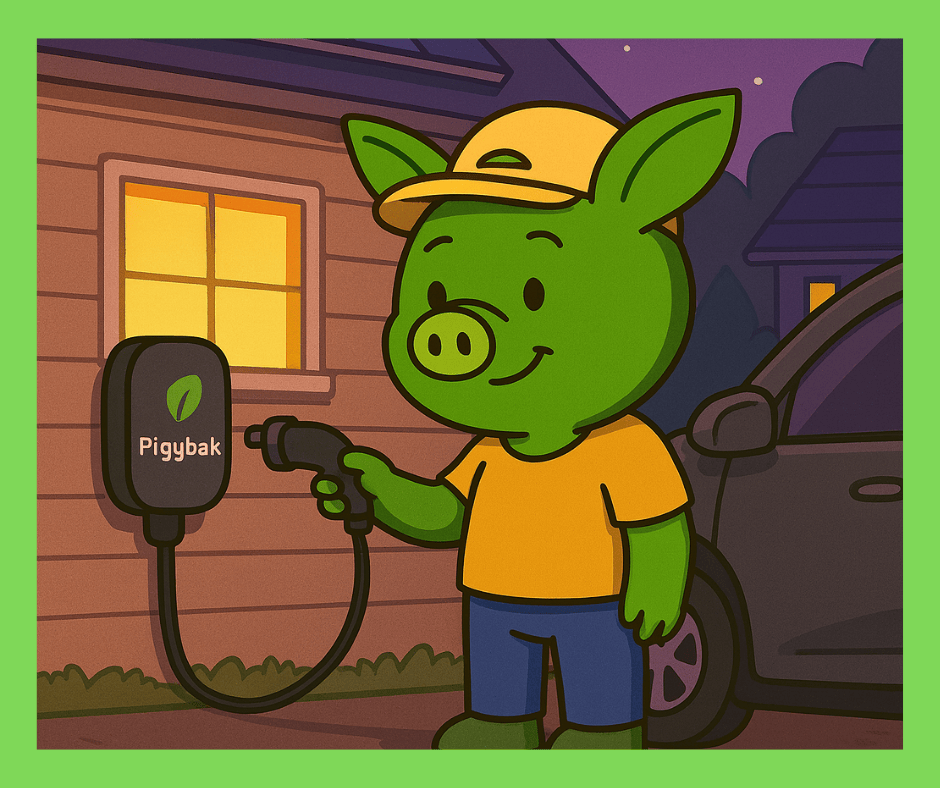We’re thrilled to welcome Emma Croft, an expert from GetGardening.info, as a guest writer on the Green Home Blog as she discusses bee-friendly garden design! With years of experience in sustainable gardening and eco-friendly living, Emma is passionate about helping people create thriving, environmentally conscious spaces. Her expertise in pollinator-friendly practices has inspired countless readers to take action for a greener planet. Today, Emma shares her insights on reducing our digital carbon footprint. Let’s dive into her expert advice and discover how small changes can make a big impact!
It’s not easy being green!

Shrinking Your Carbon Footprint: Digital Habits That Truly Matter
By Emma Croft, Blogger and Eco Expert from GetGardening.info
Every message sent, file stored, and video streamed leaves a trace of energy behind. While most of us associate sustainability with travel or food, our digital lives quietly generate massive CO₂ through electricity use, server storage, and device manufacturing. The good news? Small mindful changes compound fast.
Why Digital Minimalism = Climate Action
Our phones and laptops draw electricity from grids still dominated by fossil fuels. A single streaming hour can emit 30–60g of CO₂. Multiply that by millions of users, and the footprint becomes planetary. By curating our usage and storage, we help reduce the need for extra servers, cooling systems, and device production.
How-To: Conduct Your Own Digital Audit
1. Inventory devices. Note how many phones, tablets, or computers you actively use.
2. Check power settings. Enable automatic sleep or eco modes.
3. Clean your cloud. Sort files by size or “last opened.” If it’s over a year old and unused, delete or archive offline. 4. Monitor data flow. Tools like Carbonalyser estimate the carbon impact of your browsing.
5. Measure improvement. Compare monthly energy or storage bills after changes.
Quick-Start Checklist: 10 Ways to Go Greener Today
Action Home Impact Work Impact
1 Enable battery-saver or eco-mode Longer device life Reduced plug load
2 Lower screen brightness Saves ~20% energy Cuts monitor emissions
3 Turn off autoplay in streaming apps Less data traffic Fewer idle bits
4 Use cloud providers with renewable data centers (Google Workspace) Cleaner storage Corporate sustainability
5 Switch to eco-certified devices (EPEAT Registry) Lower embodied carbon Greener procurement
6 Delete unused apps/files weekly Less backup traffic Smaller corporate sync
7 Use Ecosia as your search engine Trees planted per query Sustainable company default
8 Recycle electronics through Best Buy’s e-waste program Keeps metals in circulation Cuts landfill risk
9 Auto-hibernate laptops after 5 min idle 10–15 kWh saved/month Efficient fleets
10 Encourage “no-video Fridays” for virtual meetings Smaller data packets Lighter network load
FAQ: Everyday Questions About Digital Sustainability
Q: Does deleting emails really make a difference? Yes. Each stored message sits on a powered server. Clearing bulk archives frees space and reduces server load over time.
Q: Is streaming in HD worse than SD? Roughly three times more data per hour — switch to “auto” or “data saver” modes.
Q: How often should I replace my devices? Extend life as long as possible; repair before upgrading. Manufacturing contributes the largest carbon share.
Q: Are smart plugs useful? Definitely. A smart plug or power strip can eliminate phantom energy from idle chargers and routers.
Learning Digitally, Living Lightly
Studying online eliminates the emissions from daily commuting and campus infrastructure. By pursuing degrees digitally, students contribute to fewer car trips and lower classroom energy use. For example, earning a family nurse practitioner master’s degree allows professionals to advance their healthcare expertise remotely — and later serve communities directly through hands-on patient care (click here).
Spotlight Resource: Framework Laptop If you ever upgrade hardware, consider modular designs like the Framework Laptop. Its replaceable components and repair-friendly system drastically reduce electronic waste while keeping performance high. Pair it with refurbished monitors from Back Market for a fully circular setup.
Bonus Tip Burst
● Unplug chargers overnight — a phone left plugged in draws trickle current
● Use iFixit guides before replacing broken gear
● Subscribe to green hosting services such as GreenGeeks
● Prefer dark-mode interfaces to save a few extra watts on OLED screens
● Encourage offices to enable cloud-printing quotas and duplex defaults
Key Takeaways
● Your devices and data consume power long after you stop using them
● Delete, declutter, and power-tune — fewer watts, fewer wasted bytes
● Choose greener tech, cloud services, and disposal options
● Audit your own habits, then commit to three instant improvements
Reducing your digital carbon footprint isn’t about perfection; it’s about awareness. By deleting, optimizing, and choosing cleaner tech, you transform daily convenience into quiet climate action. Audit your routines, adopt three of these steps this week, and watch your invisible emissions shrink.
You can feel good about using pigybak too. We don’t just focus on offsetting emissions from driving routes – the equivalent of planting 30 trees per contractor per year – we also make sustainability part of our design. Check us out and be your neighborhood change maker.



